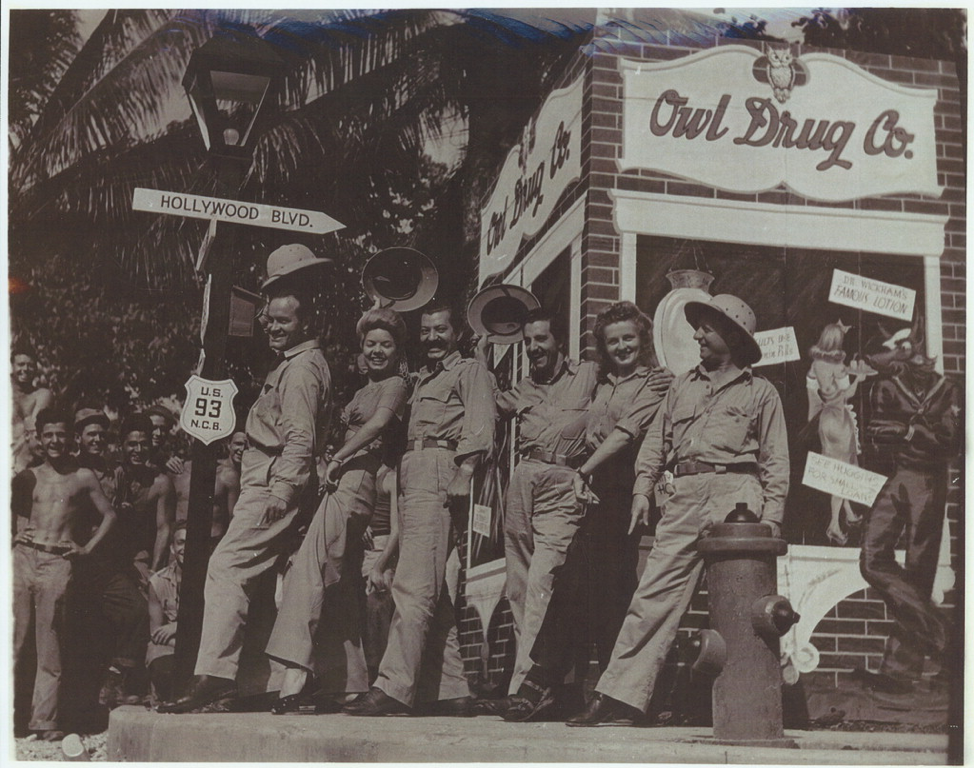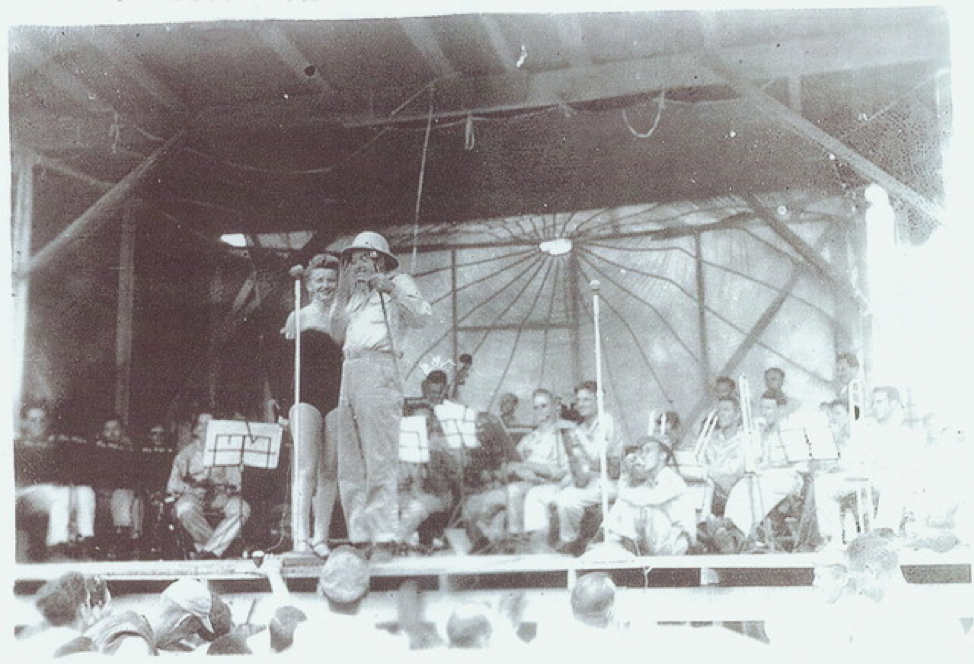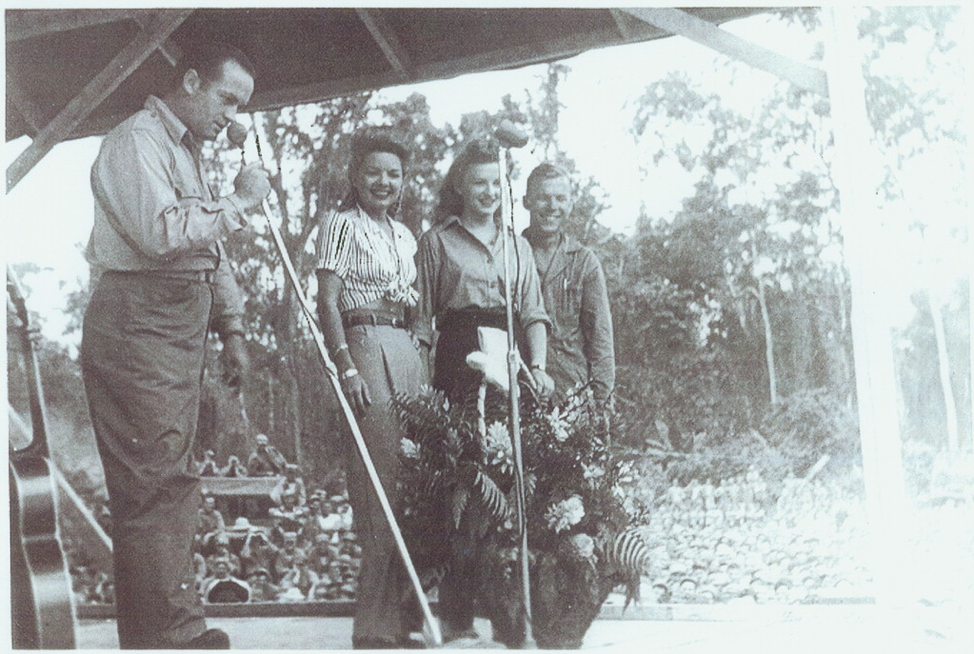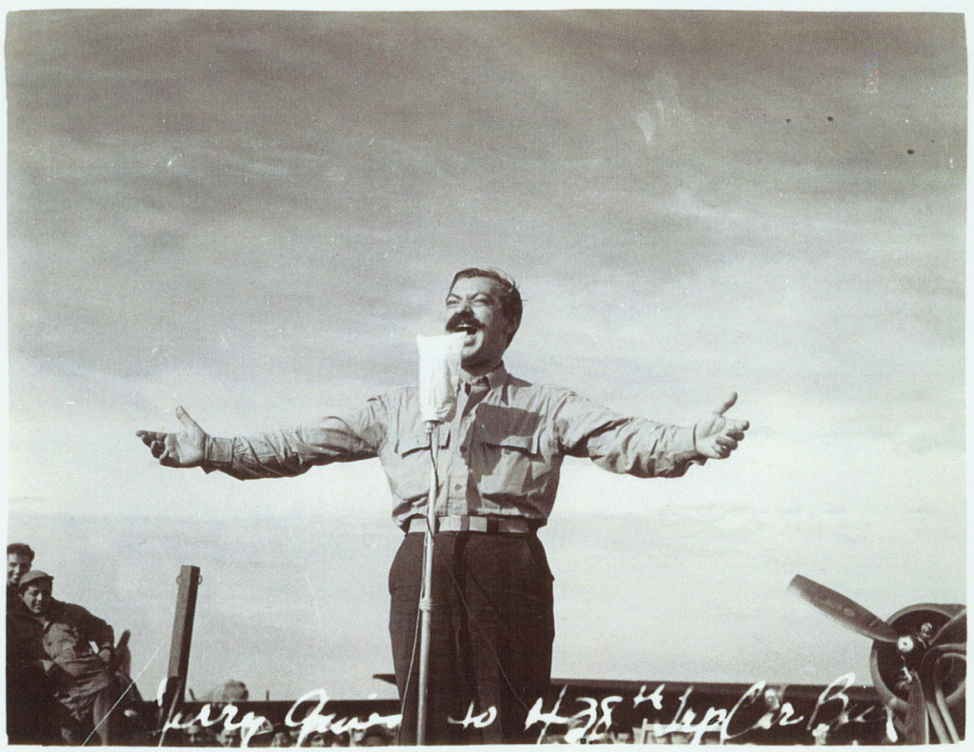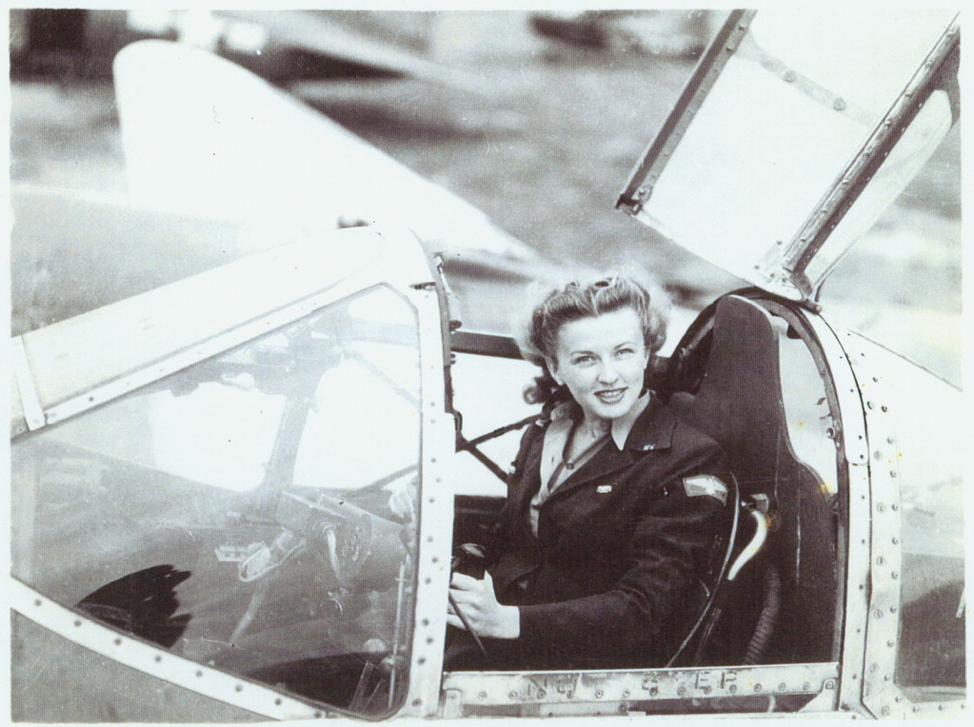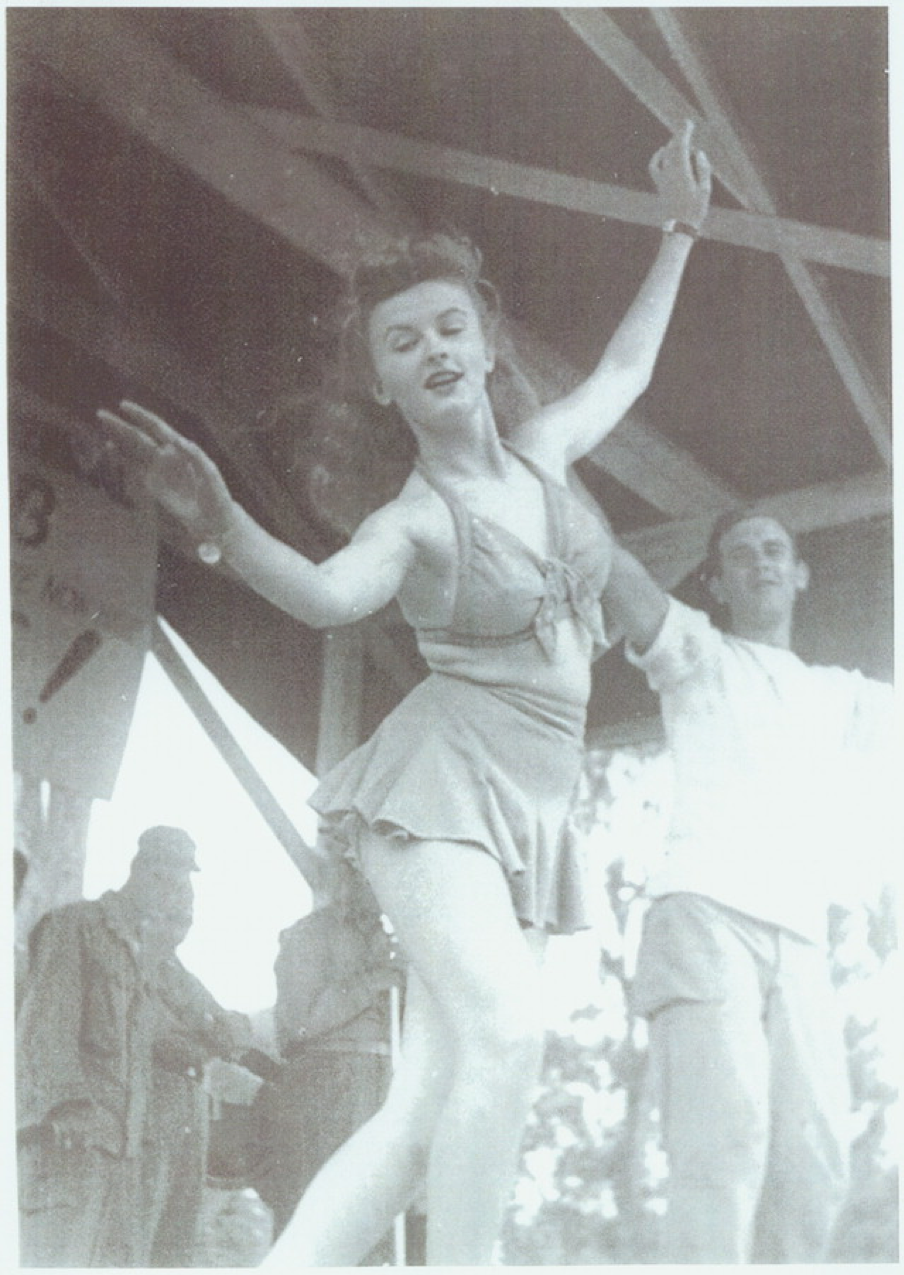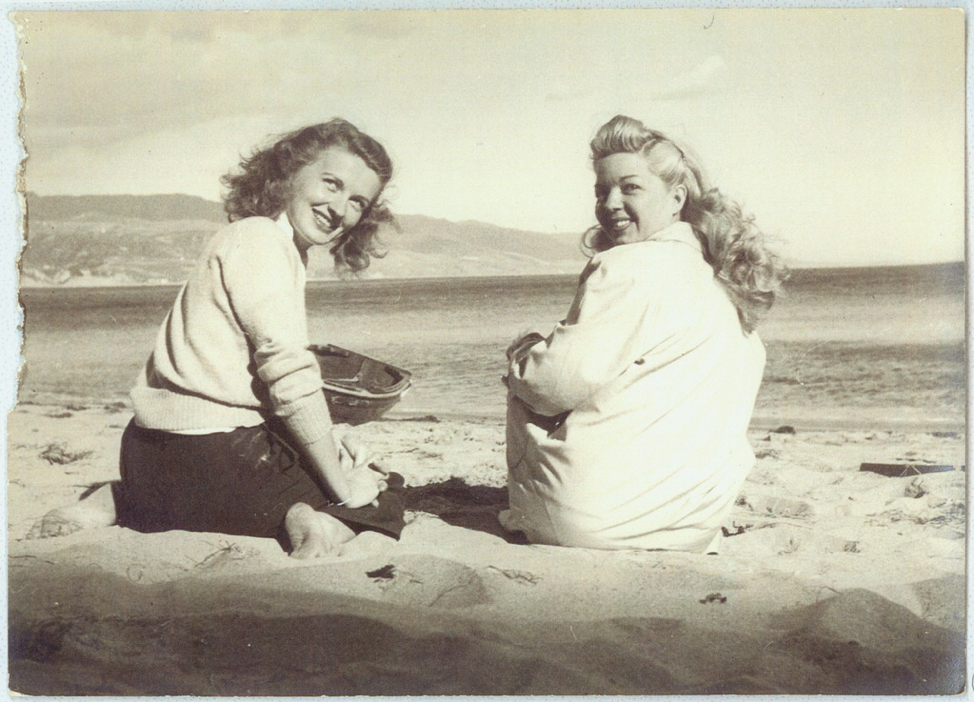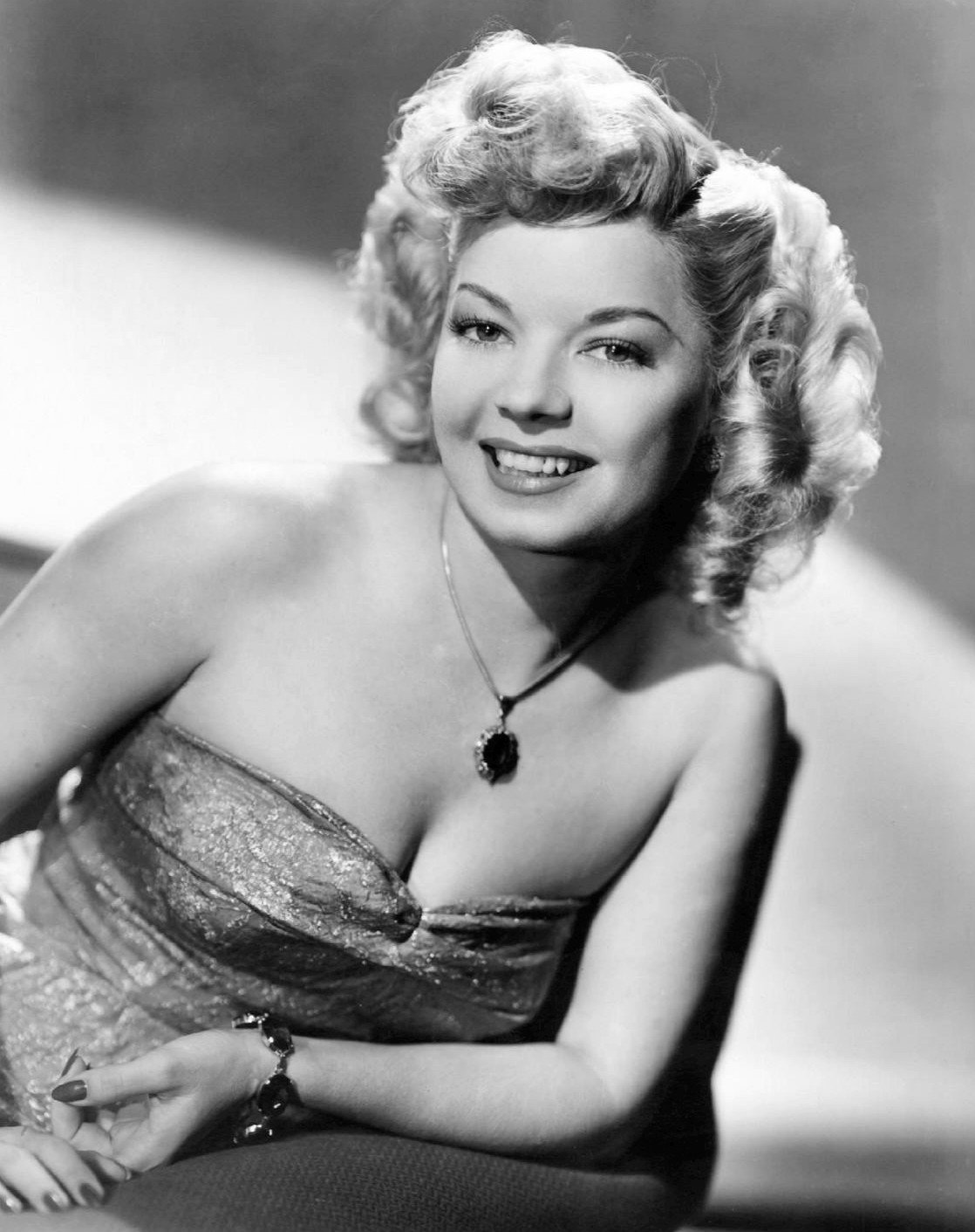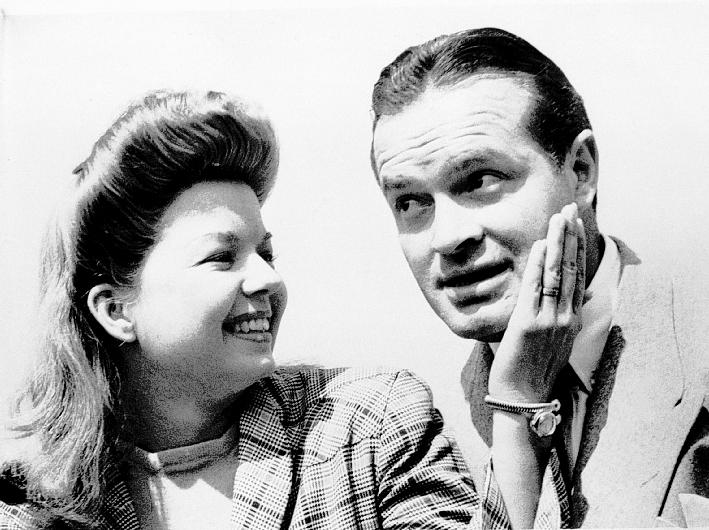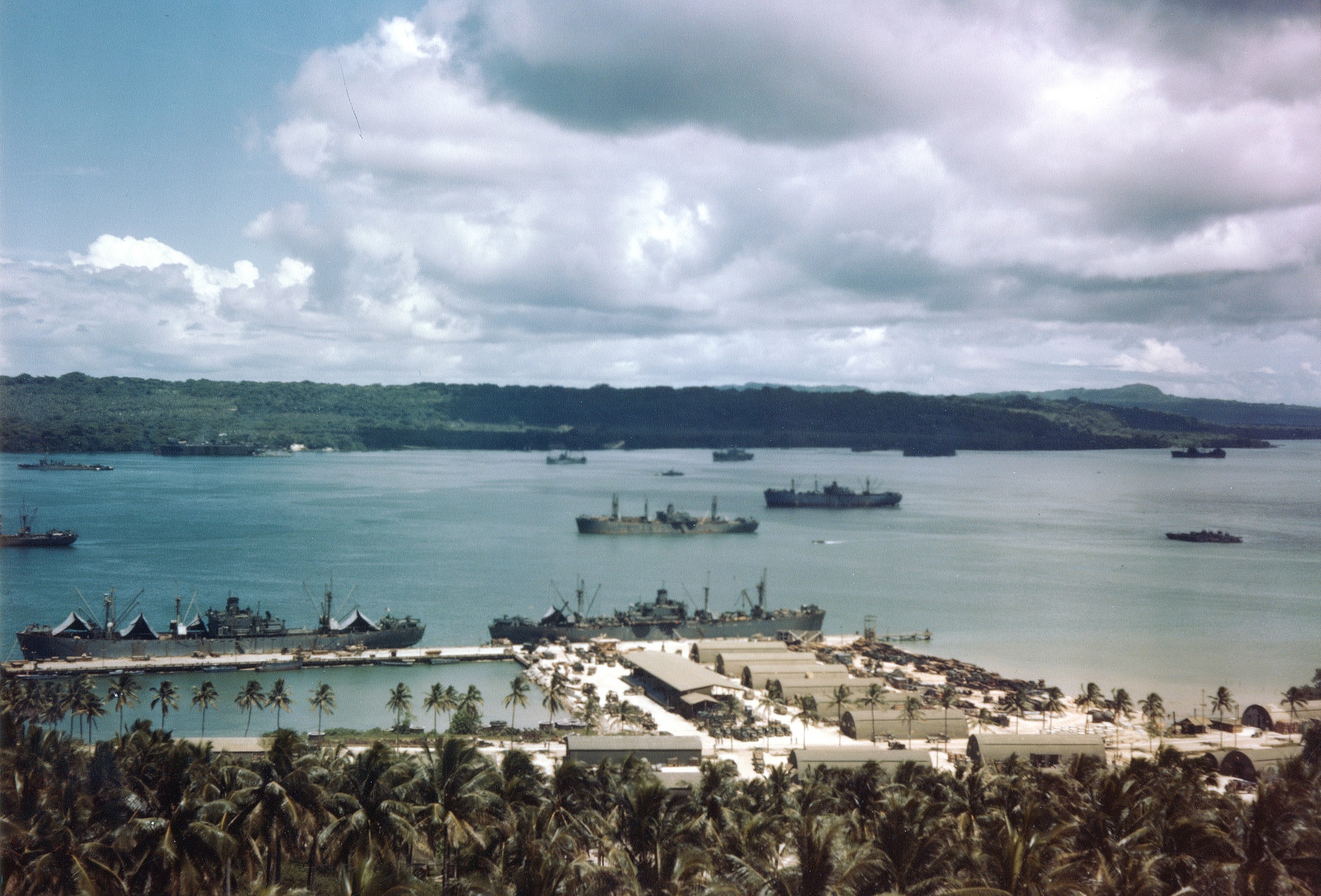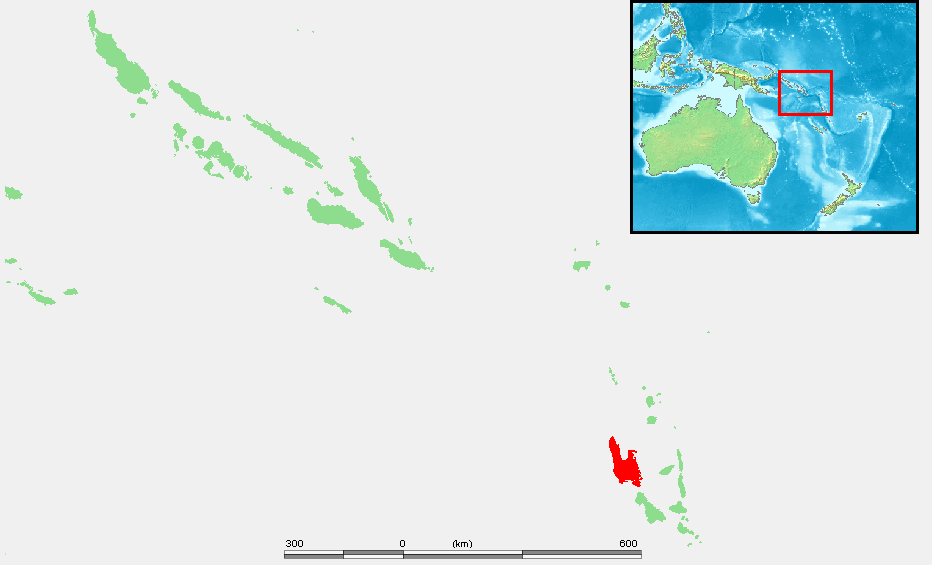In the summer of 1943, the Gypsies, with Hope’s friend and ex-vaudevillian Jack Pepper filling in for Colonna, toured England and Northern Ireland. “The European theater,” Hope said, “was a little like vaudeville with foxholes.” Actor Burgess Meredith wrote to his future bride Paulette Goddard that “the most wonderful thing about England right now is Bob Hope…. He is tireless and funny, and full of responsibility, too, although he carries it lightly and gaily. There isn’t a hospital ward that he hasn’t dropped into and given a show; there isn’t a small unit anywhere that isn’t either talking about his jokes or anticipating them. What a gift laughter is!”
Hope made a cameo appearance in the one-hour 1943 training film Welcome to Britain, starring Meredith, which tried to explain the English people and their customs to newly arriving American GIs. (In the words of one reviewer, the documentary shows that “British coffee is awful, their beer is warm, they have a fetish about tea.”) Hope shows up in a scene with a taxi driver, discussing the English monetary system of pounds and shillings.
The Gypsies did their first USO combat zone shows that summer in North Africa, Italy, and Sicily. Palermo offered them both their largest audience—19,000—and a narrow escape with their lives when 100 Nazi Junker JU-88s with a fighter escort dive-bombed the docks, destroying the area around the troupe’s hotel a few blocks away. Hope said that returning safely to the States that fall “was something of a letdown. Hollywood was tinsel and make-believe and happy endings. Where we had been was mud and reality and horror.”
Along the road to the end of the war, Hope met his heroes Winston Churchill, Jimmy Doolittle, and Dwight Eisenhower, as well as other famous leaders such as General George Patton. Years later he admitted, “I miss the immediacy of feeling you’re a part of history, even though you’re not. Yes, I miss the wars, probably because I had the best of the excitement and the least of the danger.”
“What a beautiful swamp you have here…. It’s a top-secret base—even the snakes can’t find it. If you wanna hide from your draft board, this is the place to do it.” (live at Noemfoor, off New Guinea)
The following summer, 1944, the Gypsies were off again, logging more than 30,000 miles in the South Pacific, giving more than 150 performances on remote backwater islands, places like Eniwetok, Tarawa, Kwajalein, Saipan, and Majuro. Hope called it “Loew’s Malaria Circuit” or “the Pineapple Circuit.” At one show, the troupe found out that a Japanese soldier had been killed a few hundred yards from the stage.
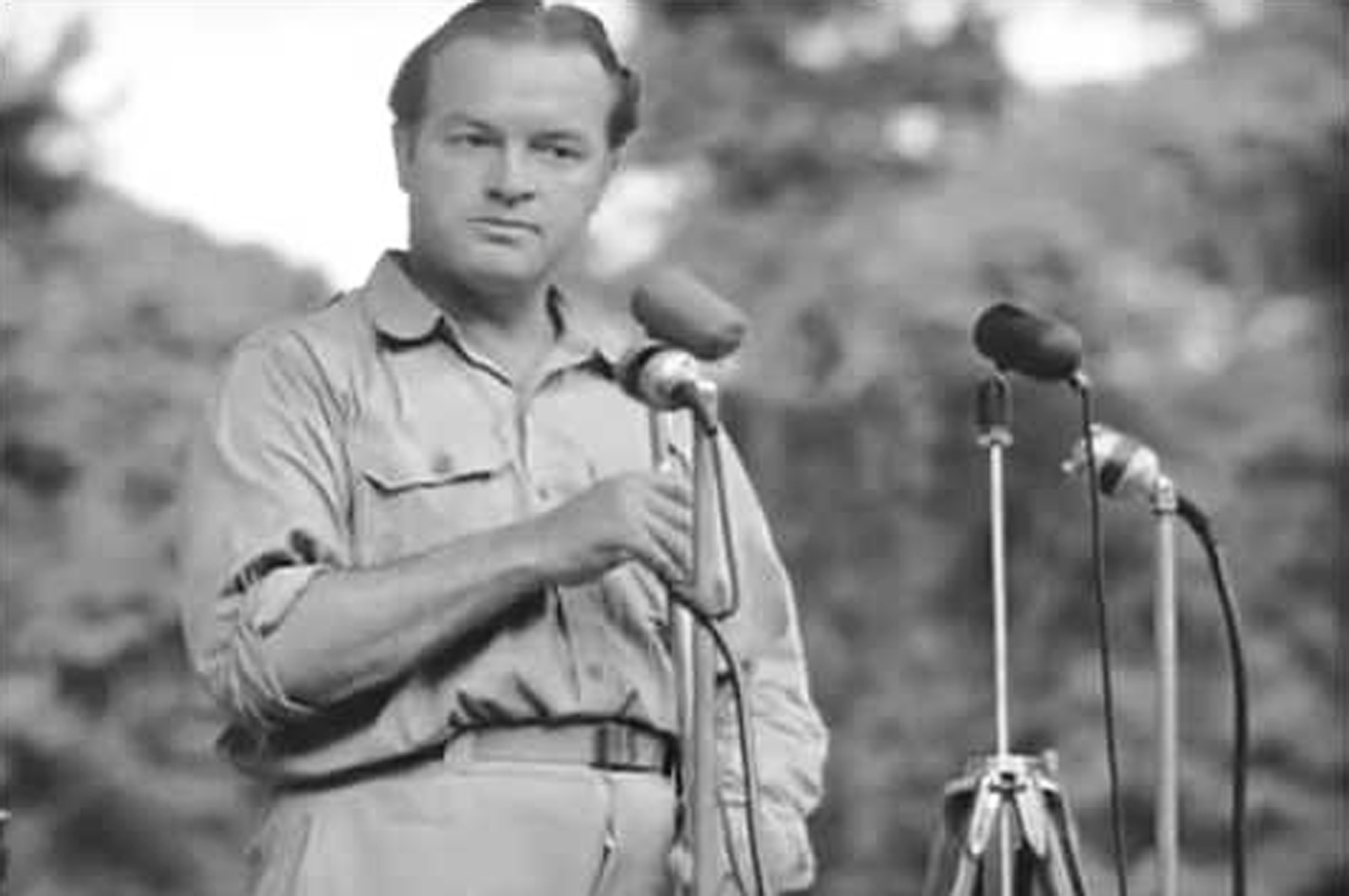




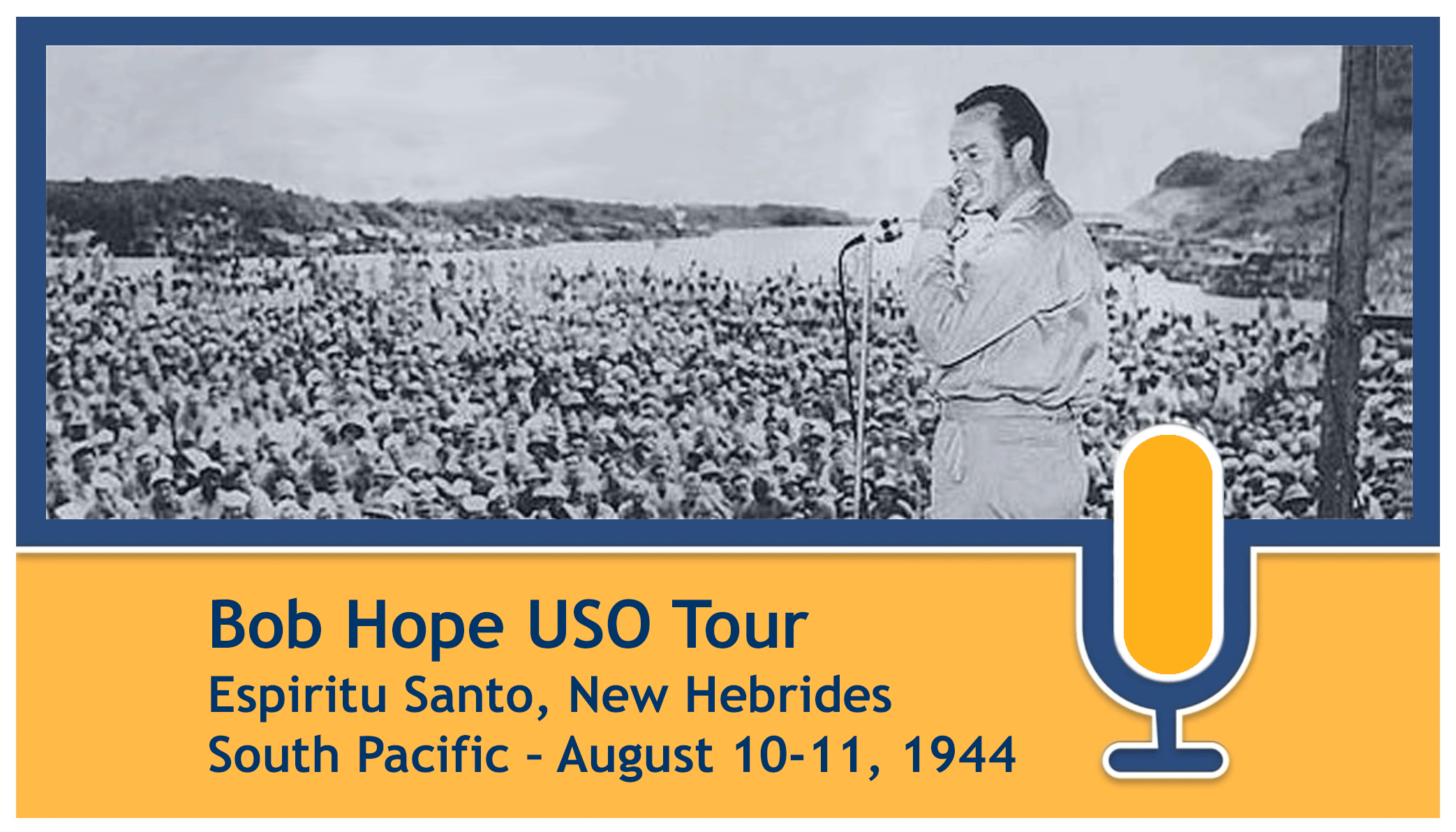
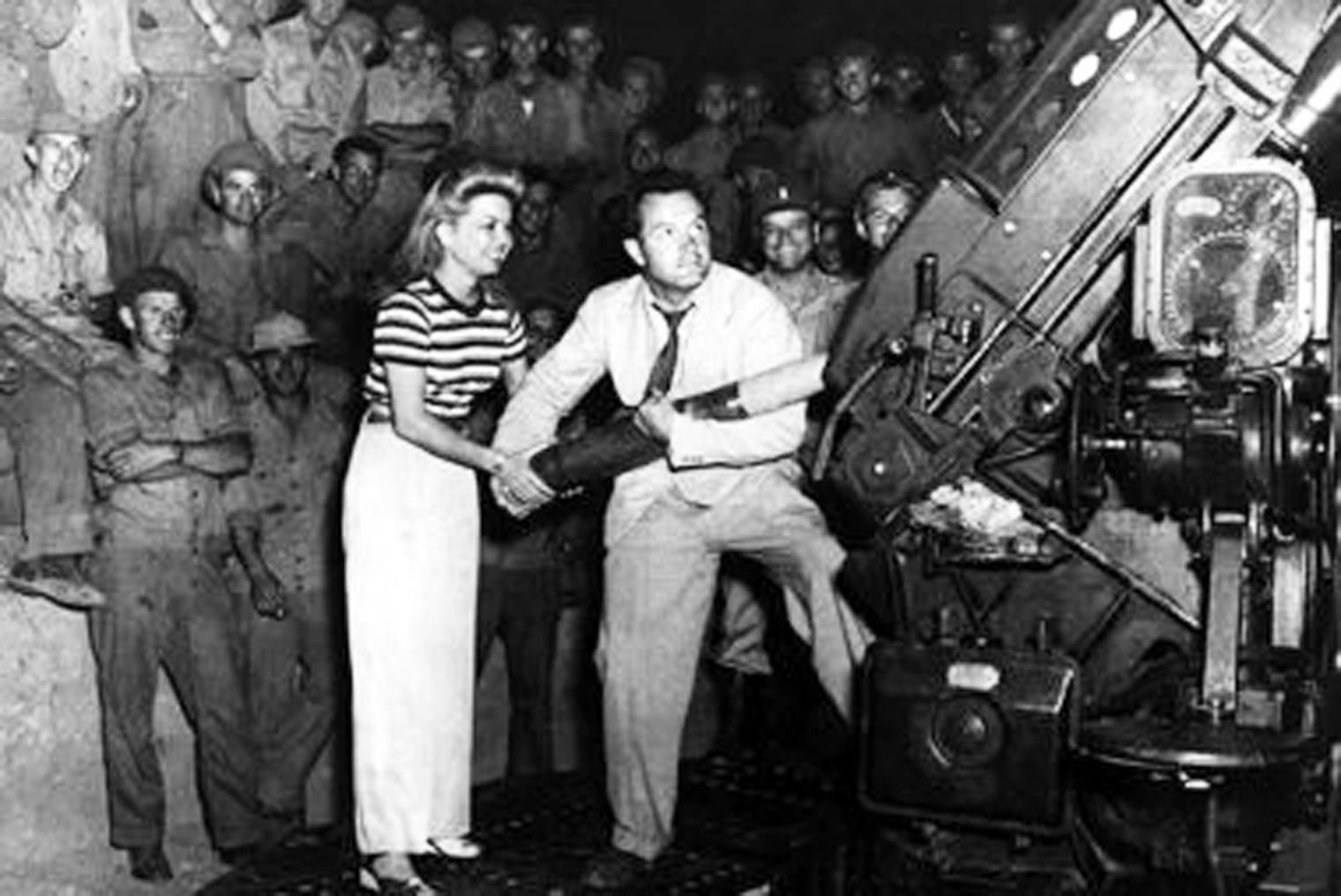
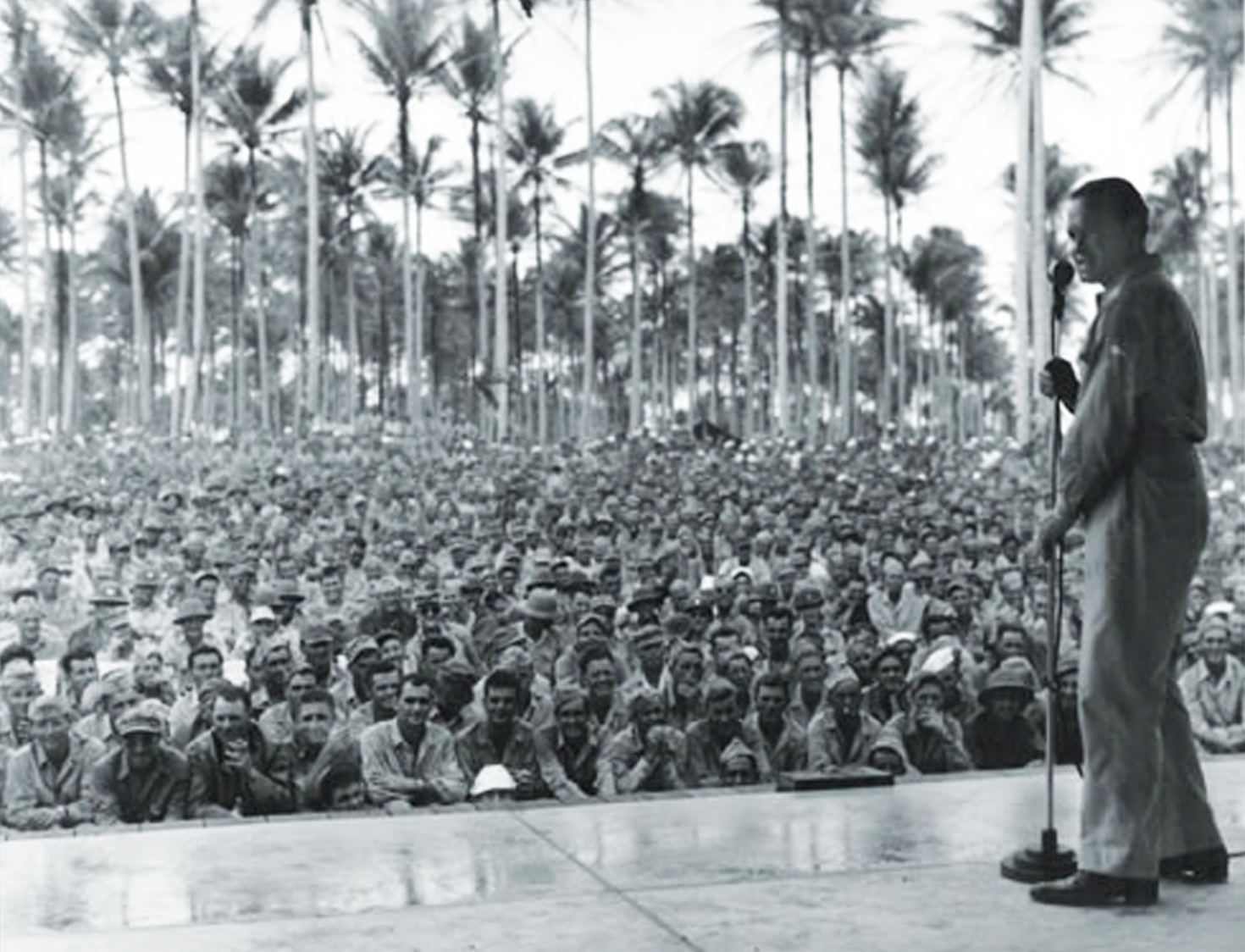
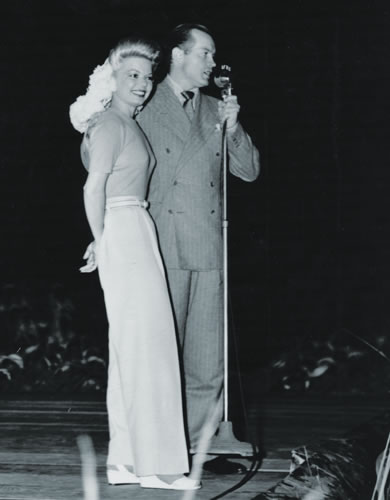
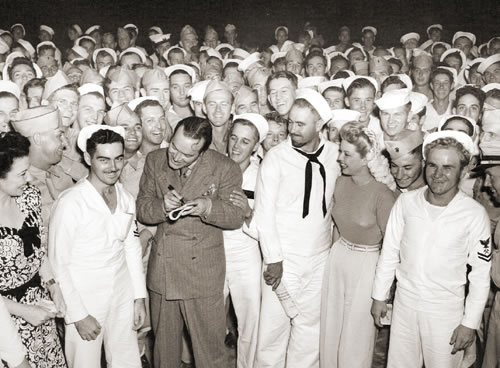
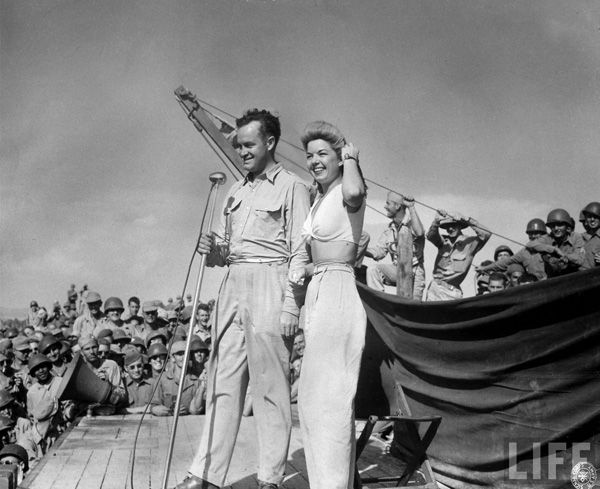
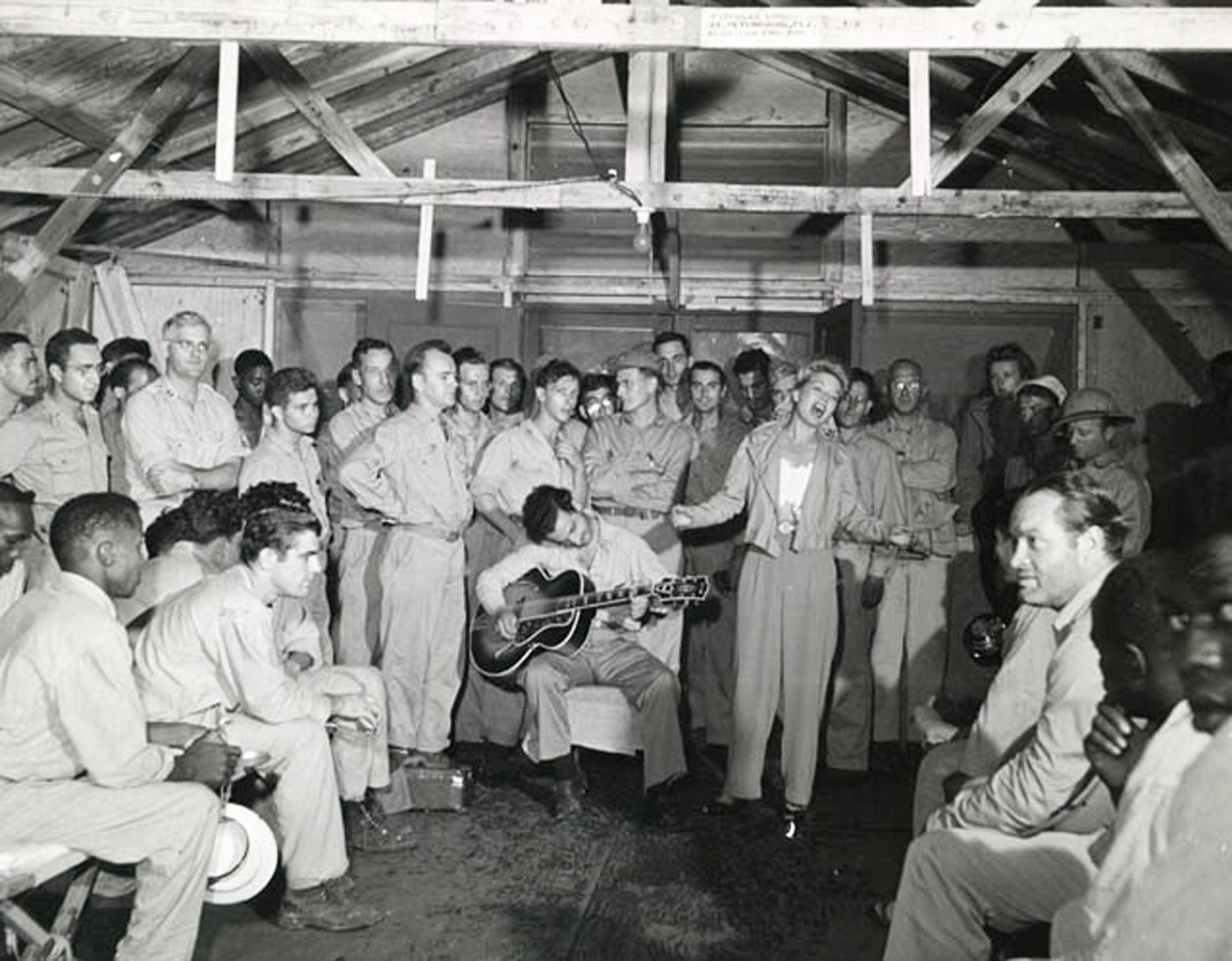
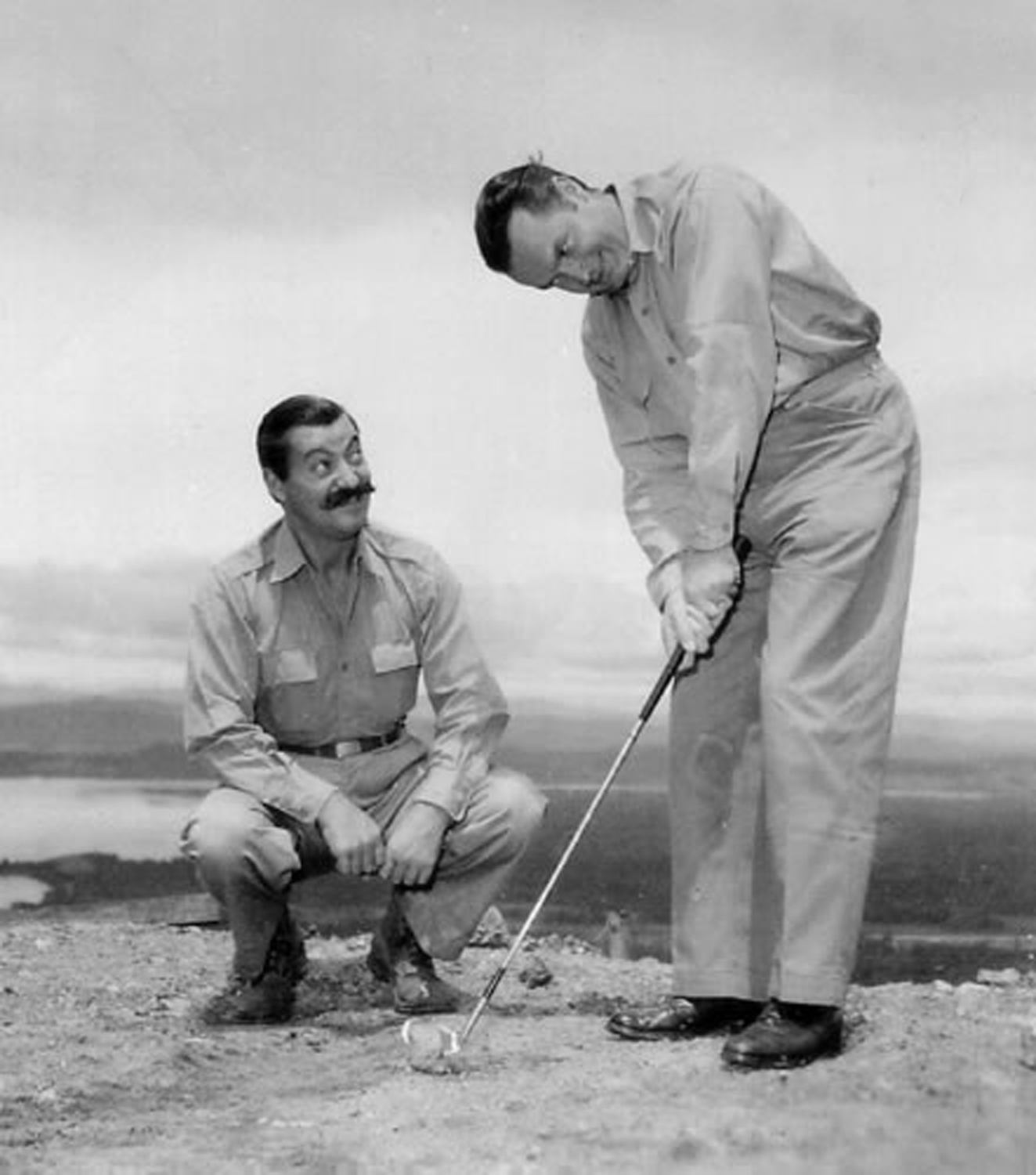
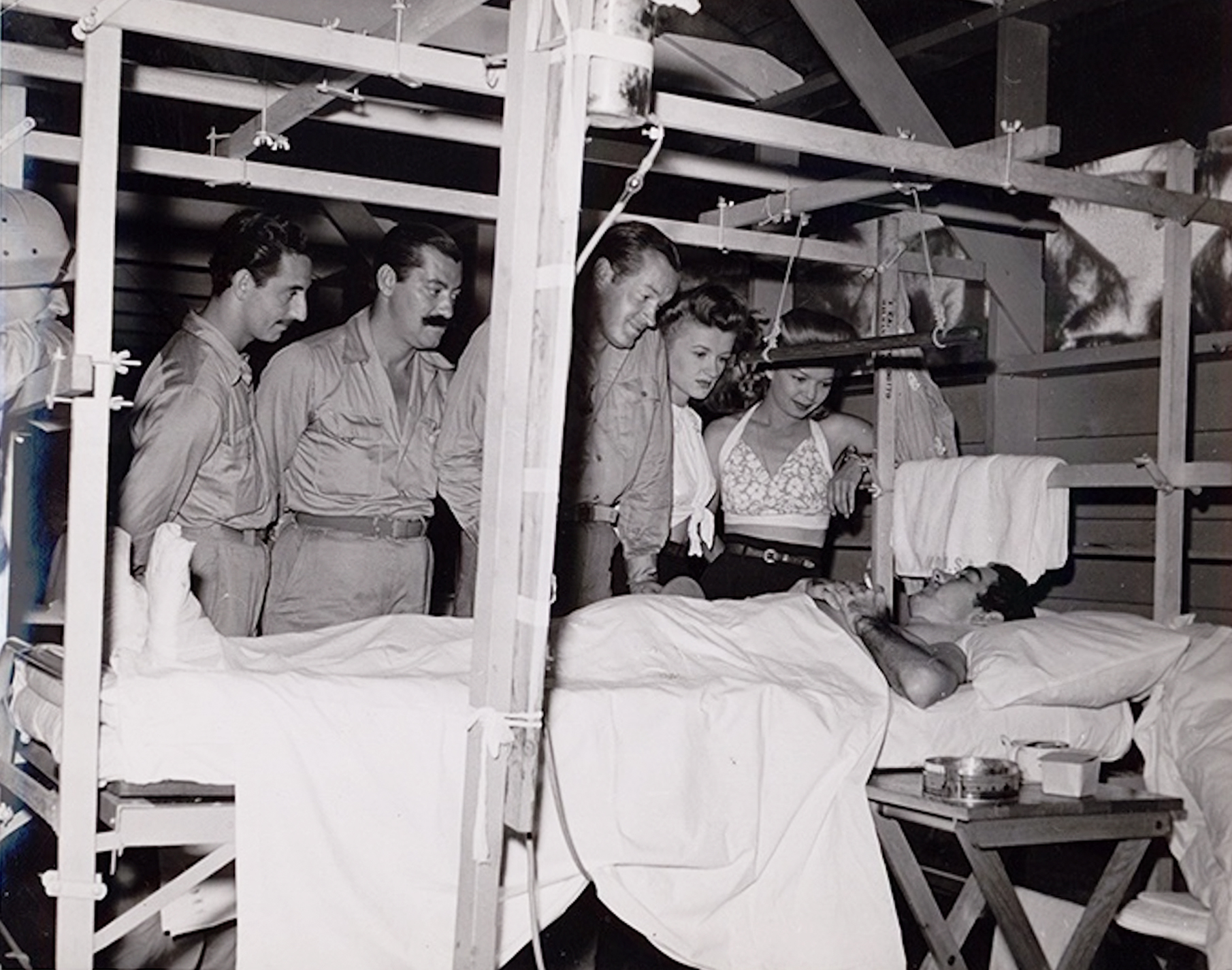
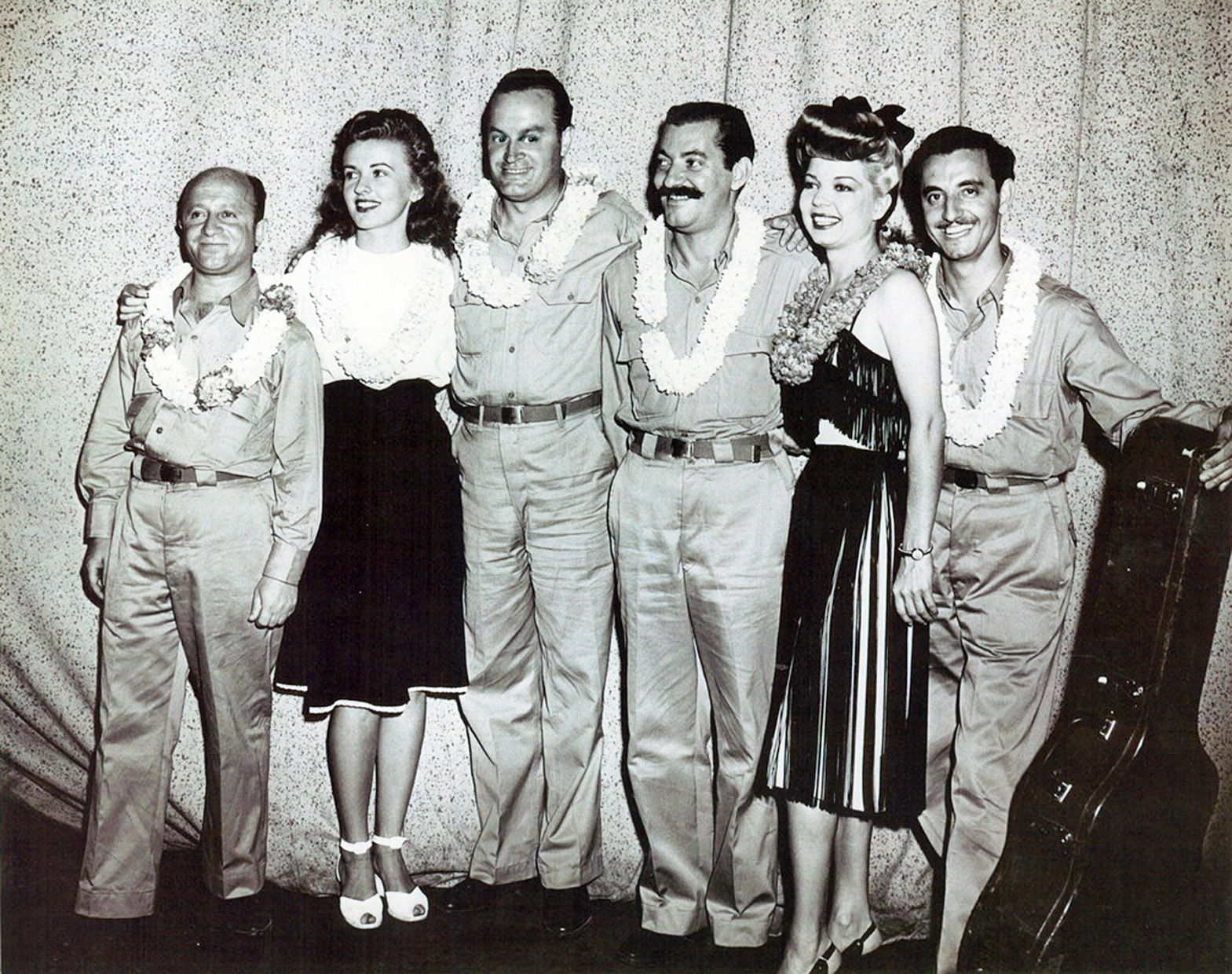
![Bob [Hope]'s writer, Barney Dean, dancer Patty Thomas, Bob Hope, comedian, Jerry Colonna, comedian, Frances Langford, singer, Tony Romano (music man).](files/fullsize_image-1842.jpg)
